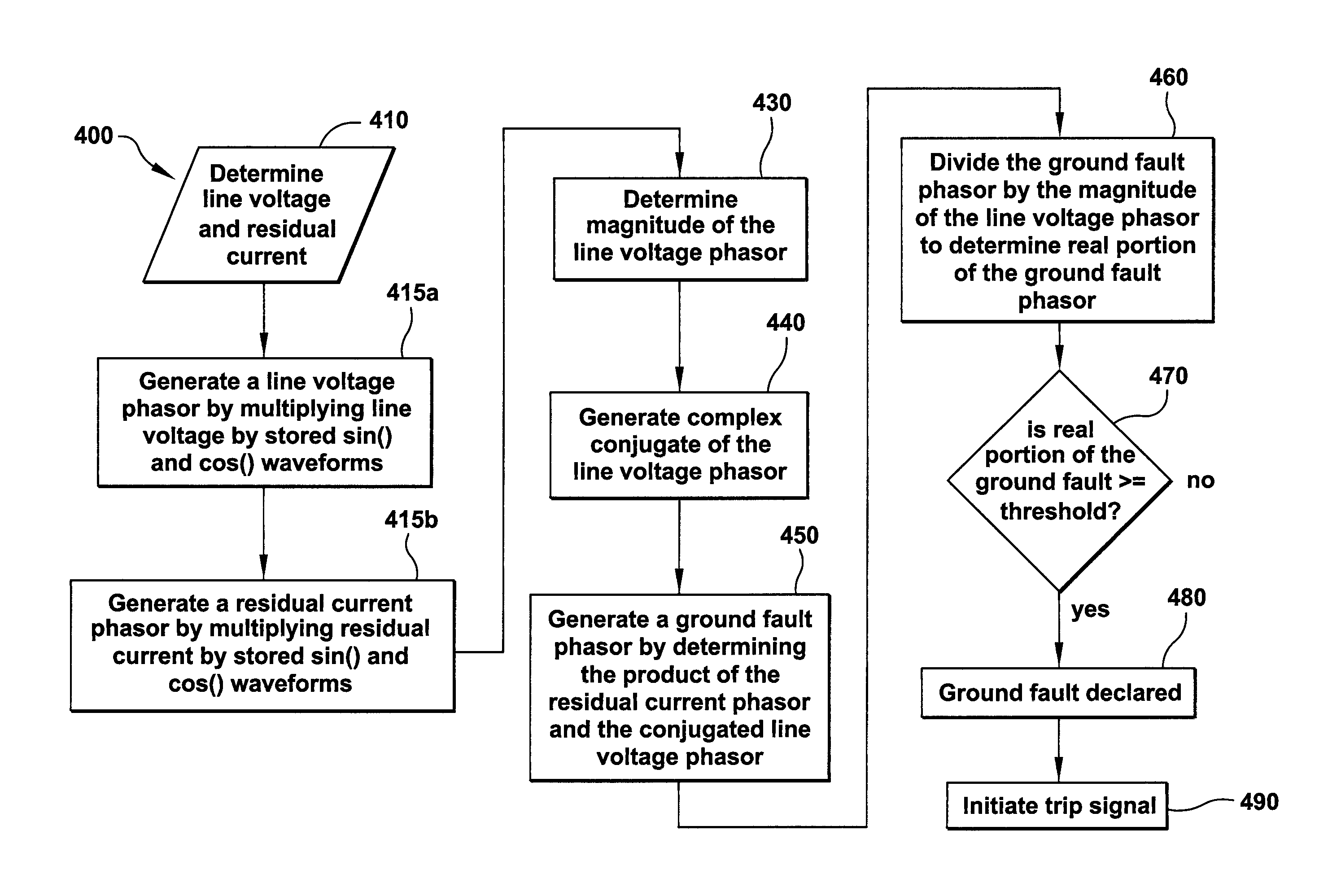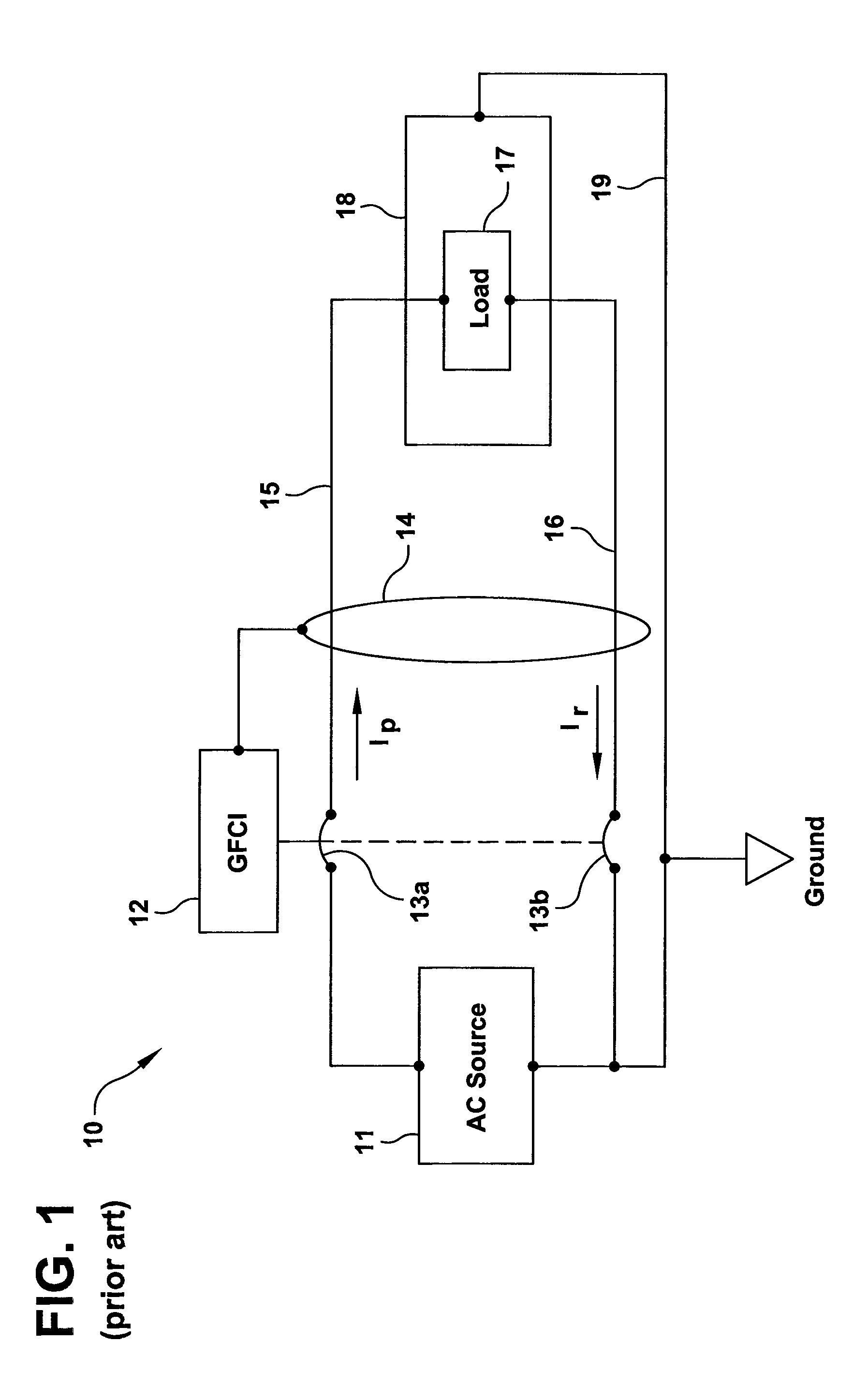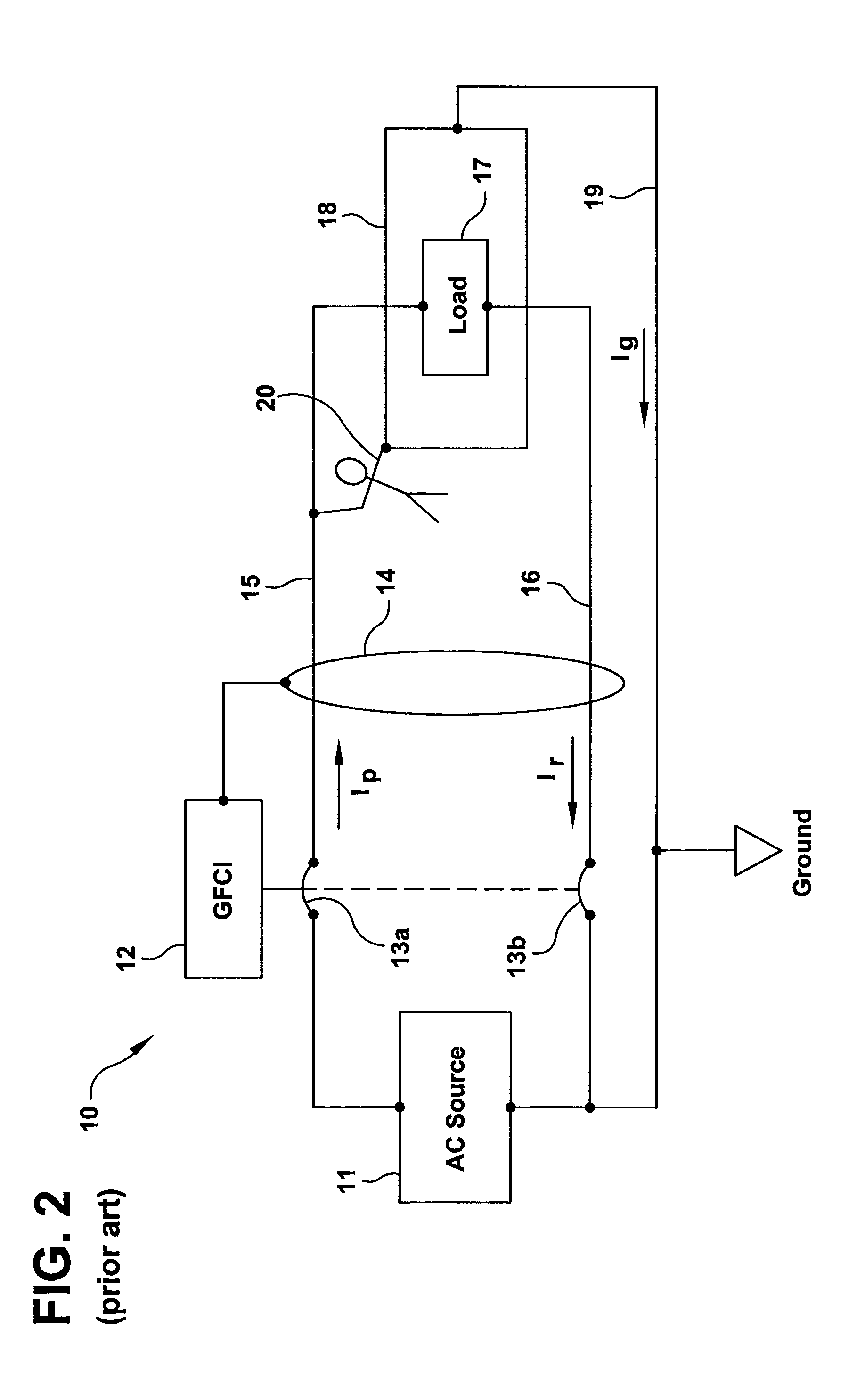Ground fault detection device
a detection device and ground fault technology, applied in emergency protective arrangements, testing circuits, instruments, etc., can solve problems such as lethal shocks or electrocution, ground faults are undesirable, and electrical current in circuits leakage, and achieve the effect of less noise sensitivity
- Summary
- Abstract
- Description
- Claims
- Application Information
AI Technical Summary
Benefits of technology
Problems solved by technology
Method used
Image
Examples
Embodiment Construction
[0030]The following description makes reference to the accompanying drawings that form a part hereof, and in which is shown by way of illustration specific embodiments that may be practiced. It is understood that other embodiments may be utilized and that various changes can be made to the embodiments shown and described herein without departing from the patentable scope of the claims appended hereto. The following description is, therefore, not to be taken in a limiting sense.
[0031]As used herein, an element or function recited in the singular and proceeded with the word “a” or “an” should be understood as not excluding plural said elements or functions, unless such exclusion is explicitly recited. Furthermore, references to “one embodiment” of the claimed invention should not be interpreted as excluding the existence of additional embodiments that also incorporate the recited features.
[0032]The detailed description is divided into two sections. The first section describes method e...
PUM
 Login to View More
Login to View More Abstract
Description
Claims
Application Information
 Login to View More
Login to View More - R&D
- Intellectual Property
- Life Sciences
- Materials
- Tech Scout
- Unparalleled Data Quality
- Higher Quality Content
- 60% Fewer Hallucinations
Browse by: Latest US Patents, China's latest patents, Technical Efficacy Thesaurus, Application Domain, Technology Topic, Popular Technical Reports.
© 2025 PatSnap. All rights reserved.Legal|Privacy policy|Modern Slavery Act Transparency Statement|Sitemap|About US| Contact US: help@patsnap.com



